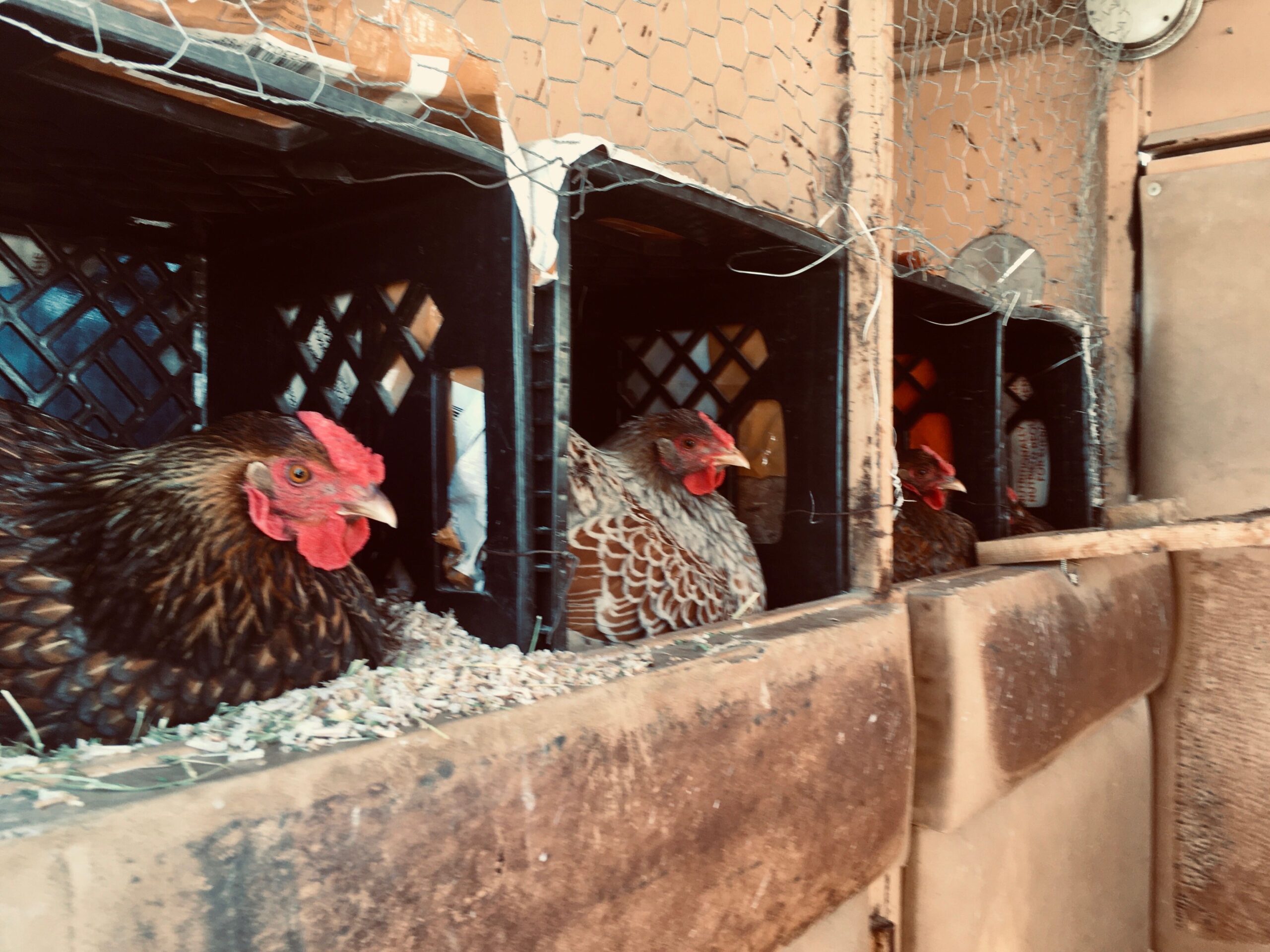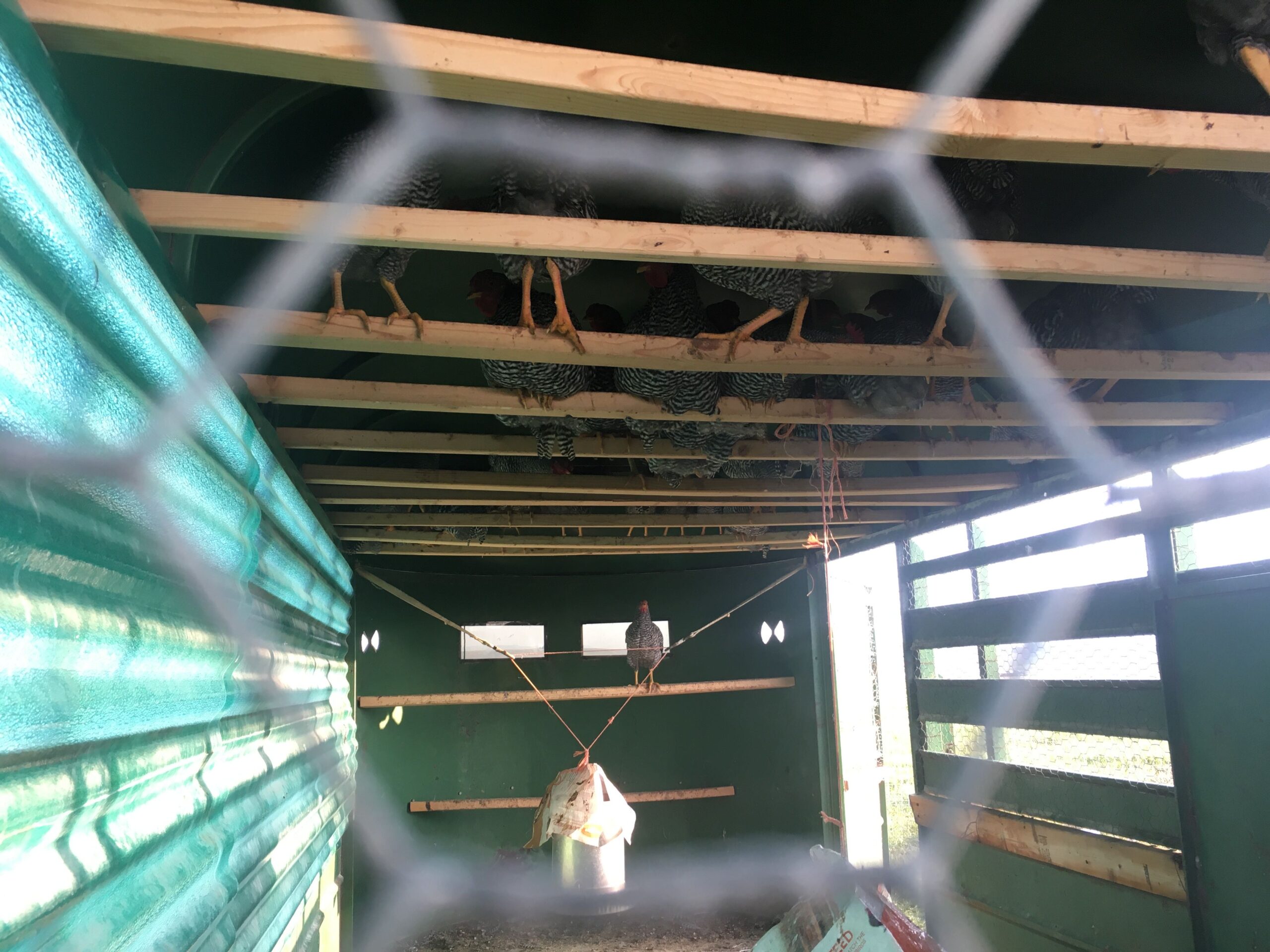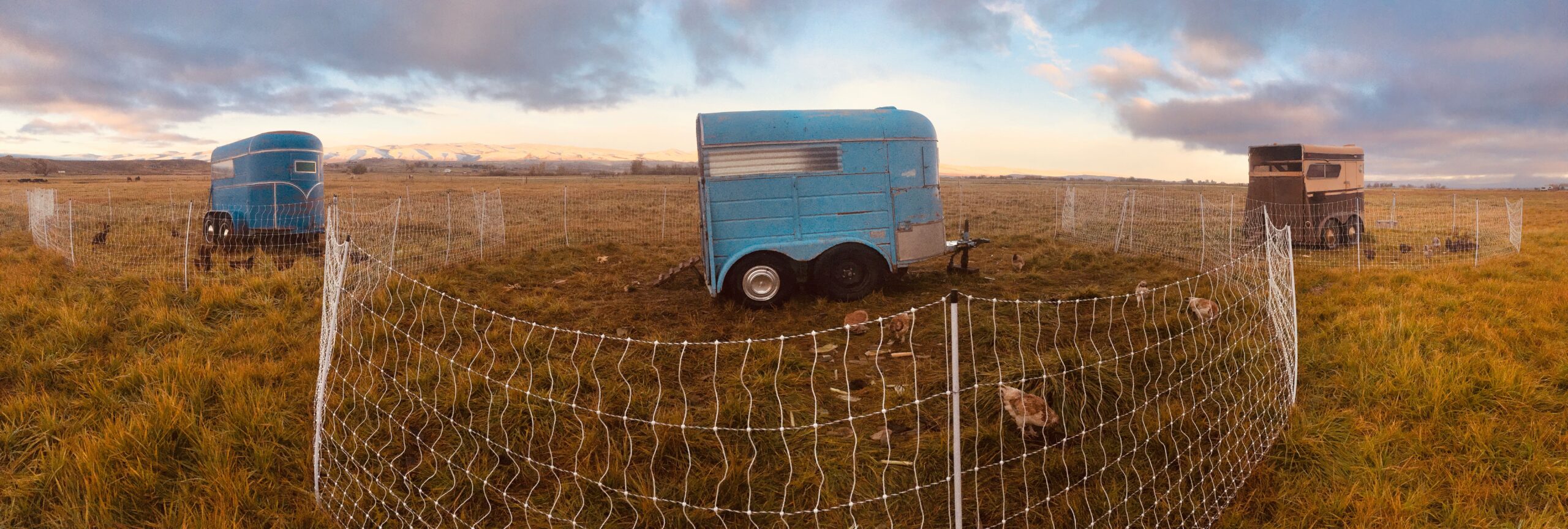Refurbishing an old trailer into a chicken coop provides mobility on a budget.
When I returned to poultry keeping, I couldn’t decide where to locate the chicken coop. Previously, I had converted a granary, loafing shed, and barn stall into avian accommodations. At my new place, there were no outbuildings to modify. Forced to build new, I turned to the internet for inspiration. I decided to go mobile, so I could move the coop if I changed my mind on its location.
The mobile coop needed to shelter the flock through frigid winters and be stout enough to stand against the blustering 60 mph plus winds. These two requirements ruled out most of the mobile designs that I found online. As I considered a stick-built skid structure, and its price tag, a neighbor stopped in. I relayed my coop indecision. “Why not convert a trailer?” he asked. I immediately caught his vision. That night, I emailed the community listserv.
Wanted: old horse/stock bumper-pull trailer
Flat tires, no lights, rotten floor, no title – doesn’t matter! The axles do need to rotate to let the trailer roll about.
I soon received an email from folks with a 1975 2-horse straight load bumper pull trailer with a tack compartment under the manger. I bought it for a token. Its running lights didn’t work. I also worried a tire would fall off if I drove faster than 30 mph! I towed it home the back way.
The Trailer Coop Retrofit
A chicken coop must have nesting boxes, perches, ventilation, and natural lighting. I gathered four square milk crates to place on their sides as nesting boxes in the trailer’s manger. At the lumberyard, I purchased 2-by-2 boards for the perches. I drilled through the trailer’s metal walls to screw the perches in place, which I arranged in ascending steps with the lowest at the trailer’s front. This allows me to enter the trailer through its rear doors, duck under the highest perches, and access the nesting boxes.
 Fresh air ventilation is vital for poultry health. In my internet dive for coop designs, I liked the layout and utility of the fresh-air poultry houses outlined in Prince T. Woods’ book published in 1924. I modified the trailer according to the principles of a fresh-air poultry house.
Fresh air ventilation is vital for poultry health. In my internet dive for coop designs, I liked the layout and utility of the fresh-air poultry houses outlined in Prince T. Woods’ book published in 1924. I modified the trailer according to the principles of a fresh-air poultry house.
I covered the opening above the trailer’s double rear doors with chicken wire. In the warm season, opening the trailer’s access doors in its “nose” provides a cross breeze. In the winter, all the access doors remain closed. With the mobile coop parked with its rear toward the south, the wind has no draw to enter the coop and ruffle the chickens’ feathers. The poultry prefer to roost near the fresh-air hatch rather than the perches closer to the trailer’s nose.
The trailer had openings on its sides. I riveted clear corrugated fiberglass sheeting over them. Through these and the fresh-air hatch in the rear, natural lighting radiates inside from three directions.
 Out to Pasture
Out to Pasture
When I grew my hobby flock into a business, I collected more no-longer-road-worthy trailers for the coops. The four breeding flocks for Melissahof Hatchery each have a retrofitted trailer coop. The rooster chicks that I raise on pasture for meatbirds also live in former trailers. The mobile coops float around that pasture as a flotilla. I rotate the poultry to fresh grass by towing the coops with a Utility Terrain Vehicle (UTV). The trailers provide some benefits that I didn’t initially identify. During hot summer days, the poultry shade up underneath the trailers next to the cool soil and in the refreshing breeze. When aerial predators glide overhead, the chickens take cover under the coops.
 I now have six horse/stock trailers retrofitted into mobile coops. I’ve nicknamed my place the trailer park! Small aircraft regularly buzz the farm. I see the airplanes drifting overhead. Then, they bank and come down for a closer look at the oddity of trailers grouped in a pasture. Some day, if I’m bored, I’ll paint, “Chickens live here,” on the trailer roofs.
I now have six horse/stock trailers retrofitted into mobile coops. I’ve nicknamed my place the trailer park! Small aircraft regularly buzz the farm. I see the airplanes drifting overhead. Then, they bank and come down for a closer look at the oddity of trailers grouped in a pasture. Some day, if I’m bored, I’ll paint, “Chickens live here,” on the trailer roofs.
For video tours of the trailers retrofitted into coops, visit the Facebook and Instagram pages of @melissahoffarm.
Melissa Hemken is a freelance photographer and writer based in Wyoming. She also operates a small farm business. Read more of her work here, www.melissahemken.com, and find Melissahof Hatchery at www.melissahof.com.
